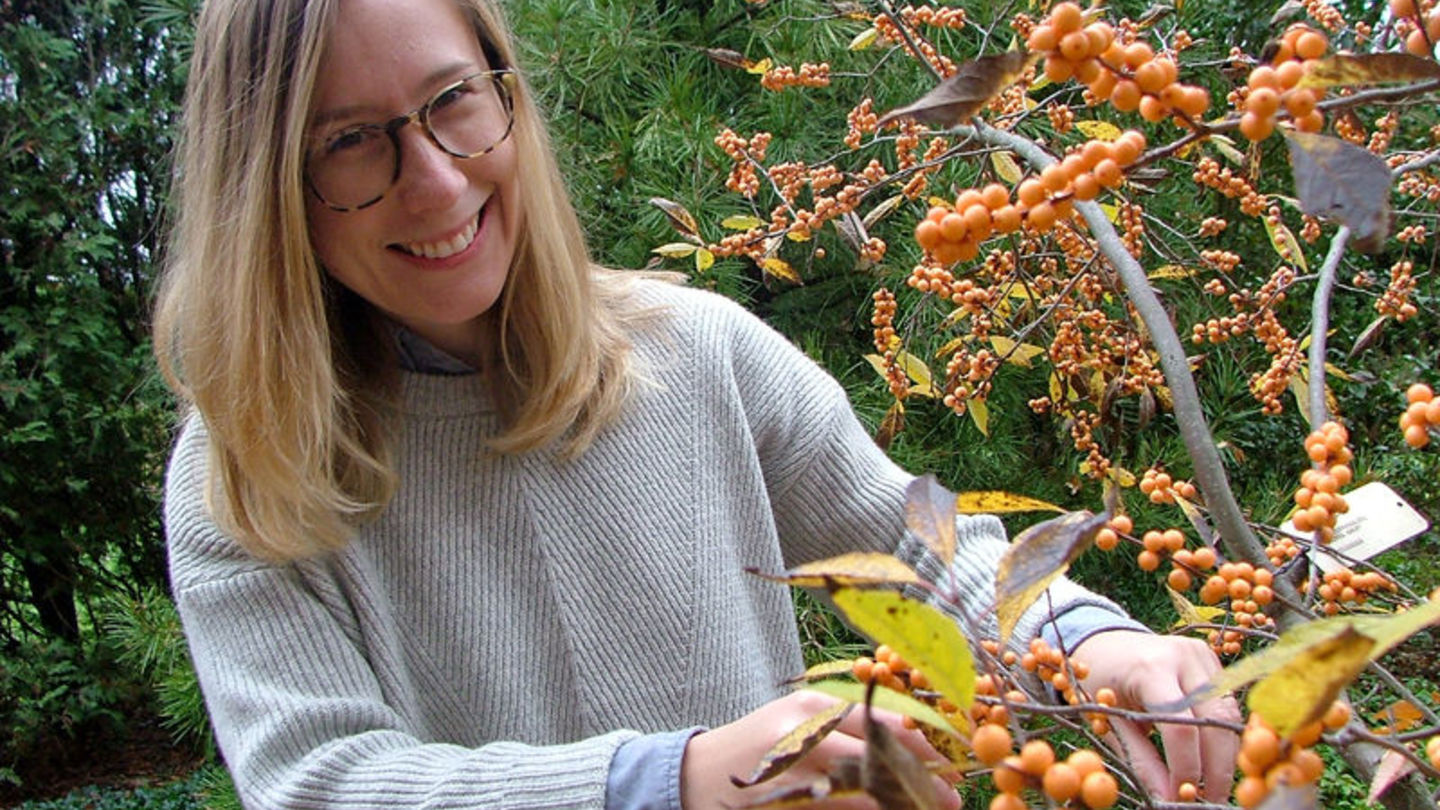
By Anna Lynn Johnson
Marketing and Public Relations Intern
Kate Axelson Benisek is a storyteller.
While most traditional tales live in the ink on a page, Axelson Benisek's are told through the landscape architecture design processes involved with creating the built environment in tandem with the natural world.
She pays careful attention to a location's past and how shifts in culture and perspective have changed standing structures and the landscape over time, as well as the relationships people have with their environment.
"My initial interest in cities had to do with studying the history of urban spaces and how that could represent the culture or a particular leader," said Axelson Benisek, an assistant professor and lecturer in Temple University's Department of Landscape Architecture and Horticulture. "I wanted to explore how landscape architecture tells the story of how a civilization came to be, how cities came to be and how they relate to nature at different times throughout the course of their development."
In her work as a landscape designer, Axelson Benisek acknowledges a landscape's past so that she can craft how the space will evolve.
"I consider the importance of narrative in landscape architecture; whether it's oral histories of people's relationships with landscapes, or individual stories of connection with designed spaces," she said.
Axelson Benisek's work has taken her down varied and complex roads in her field.
"I've worked with the Charles River Watershed Association, consulting with major municipalities regarding storm water and water quality management in urban and suburban areas," she said. "I've explored the possibility of a 20-acre natural burial ground in southern New Hampshire. There are a lot of different fields in landscape architecture and design."
With each project, Axelson Benisek keeps in mind how the natural world, the built environment and humans will interact in these created spaces.
"Landscape architecture has a fantastic ability to work with natural systems to create a cultural place, one that humans can recognize as a space that was designed for them to experience, a place that is different from a natural landscape," said Axelson Benisek, who has a BA in History from Boston University, a Master of Arts in Landscape Design from the Conway School and a Master of Landscape Architecture from Cornell University, where she served as a teaching assistant focusing on urban horticulture.
Since 2014, she has brought her passion for "landscape storytelling" to her students at Temple University.
"I'm bringing storytelling into the classroom with digital multimedia communication and narrative, particularly in my Green vs. Gray: Improving and Sustaining Urban Ecosystems large lecture course. I want my students to develop their own narrative process, their own voice, while practicing what they are learning in the classroom," she said. "My hope is that by recording their experiences using video and audio interviewing techniques, students will tell the stories of the various urban greening organizations that they work with in Green vs. Gray. I want them to reflect on these projects with their own voices — what they have learned about their community and about themselves."
Axelson Benisek's focus on her students developing their own voices in the design process has been met with enthusiasm in the classroom, she said.
"I'm impressed with the technical and digital skills that they've gone on to use in other projects that they pursue on their own time," she said. "They present and articulate their own work through digital narrative, and I'm very excited by what I'm beginning to see."
It's important for students to realize early on that the design process is not linear, Axelson Benisek said.
"It's reflection based and it's cyclical. You're constantly practicing, repeating design processes given feedback in projects. While we're primarily designing for people, you need to take all stakeholders involved in the project into consideration," she said. "You should consider the needs of non-human communities — plants, wildlife, all living things that we coexist with and have the power to support or destroy based on our actions. A designer has the ability to protect, work with or enhance natural systems by design."
Axelson Benisek draws on her extensive educational and academic background in landscape architecture, design, history and horticulture during her projects to ensure an area fits into the greater landscape around it.
"I've been trained to think about and consider a site's context in a variety of ways. It might be ecological, environmental, cultural, geological, or all of the above — they all contribute to the site's sense of place," she said. "I work alongside planners and engineers, and often they call on my horticulture knowledge to create a more detailed design that enhances an engineered system. You have to know a little bit about so many different things in this field. A huge knowledge base is required; that's part of why I love it so much."
